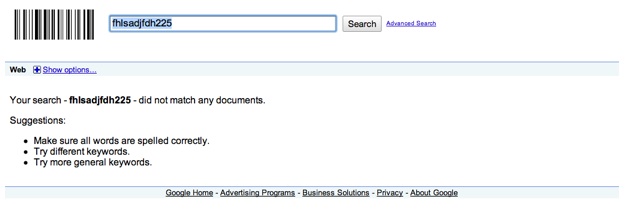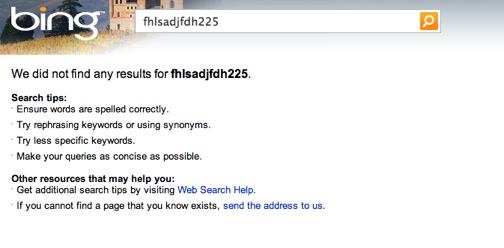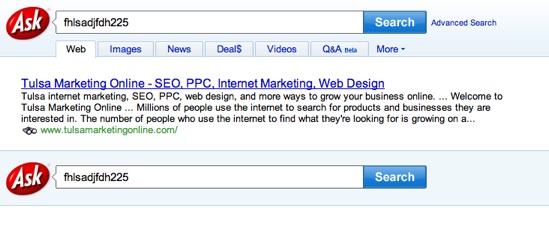Canonicalization is a major part of SEO, but at the same time one that still gets missed by many web designers. Check out my guest post at Daily SEO Tip. I get into more detail on what it is and how to fix canonicalization there.
So Google made a few major updates this last weekend to AdWords. I manage several different accounts, so I’ve seen first-hand what kind of impact this has had.
First of all, they updated the AdWords Editor – a great tool, by the way, I highly recommend it. You can find it here: AdWords Editor. But yeah, they made a few tweaks, in particular I noticed changes to the Campaigns tab. You can now affect the ad schedule from here, location changes, so forth. And if I remember right, the “Keyword Opportunities” option in the Keywords tab is new, as well. It’s the Google machine offering suggestions on keywords that might be relevant to your ad group.
The other big change I saw was Quality Score. The Quality Score on a lot of my keywords dropped. In some cases, heavily. Google is getting tighter when it comes to looking at relevance between keywords, ads, and landing pages. In particular, the landing page. The average QS used to be around 7, you had to be pretty far off to drop much below that.
Well now I’m seeing an average closer to 5, and only very relevant pages are getting 7 or higher. A page has to be completely relevant and contain a lot of solid info (as well as be on a high quality site) to get a 9 or 10 now.
Not sure how this will affect advertisers, but it may be interesting to watch. It does mean that I’ll have to be a lot more careful with the quality of pages I point my ads to. I recommend you do the same.
I’m updating the blog. It’s been too long, but I thought it might be good to start adding more than ONE new post a month. So what I’m going to do is put some posts to link to other pages I find interesting and relevant. I’ll still add informative posts of my own, although probably not quite as often.
To distinguish between me and my linking love, I’ll keep my name on the posts that are all me, and then for the posts that are linking out to a cool piece of SEO news or something, I’m using George. So if you see George, he’s here to tell you about some cool new post on SEO news, something Matt Cutts might have mentioned, or an adjustment to one of the algorithms in the search engines.
I’ll be posting quite a bit more (well, George will), so keep watch.
Google Caffeine is finally going live, apparently after the holidays. Caffeine is the latest update to the Google algorithm, which makes a few people nervous They’re starting with a single data center update, but Matt Cutts says they’ll be rolling it out fully by the end of the holidays.
I still hear from a lot of SEOs that are convinced the keywords meta tag actually makes a difference. Well, I thought I’d run a full test to see how much attention the search engines pay to it.
The test was as follows: I put a random string of letters and numbers together and slapped it into my keywords meta tag.

Keywords Meta Tag Test
So there it is. And I let the engines go out and gobble up my site. After the robots had all crawled it, I did a check to see what each search engine found. And this might surprise you, but here you go:

Google Keywords Meta Tag Test Results

Yahoo Keywords Meta Tag Test Results

Bing Keywords Meta Tag Test Results

Ask.com Keywords Meta Tag Test Results
And as you can see for yourself – only Yahoo and Ask seem to pay any attention to the keywords meta tag. Not only that, but it was very recently revealed that Yahoo will no longer use the keywords meta tag.
So, as I’ve said before – the keywords meta tag is only used by people who have not done the research to realize that it doesn’t do anything. For SEO, keep your optimizing solid – use the primary elements, the title tag, the description tag, header tags where valid. But remember to target humans, not just the search engines. If you keep that in mind, you’ll likely find yourself in better positions on the search engine results pages.
I had noticed recently that I was sending emails to certain people and not receiving replies (when it could be expected I’d get some). Well, it appears that some hostings services are starting to tightly conform to RFC 2181 by the IETF (Internet Engineering Task Force), which was updated in July of 2009.
What’s happening is basically that mails sent by the mail servers that are set up with aliases for the domain are getting bounced by these hosts that are conforming to RFC 2181. The servers should be set to a proper A record or directly to an IP address to prevent this issue. If you’re having similar issues, talk to your hosting company (if your mails are bouncing) or talk to the people who sent the emails whose emails bounced when they sent them to you.
For me personally, I know I need to keep my emails in check since it’s a primary form of communication and business, so this is rather important. It’s good to be aware of such updates that can have an impact on potential business and even on personal communication.
I found a very interesting article today, through NPR. It’s talking to Bob Garfield, and references to his book The Chaos Scenario. Essentially, the article was covering the changes in marketing we’re seeing today.
The world as all advertisers knows it is changing. Changing drastically. Marketing is not dying – it’s being reborn.
Most people are moving online. Using the internet for almost everything now. I know that I can count myself in with this – if I’m looking for an address to meet with a business, where do I look? The internet. If I want to find out when the next showing of the new movie I wanted to see was out is going to be at, where do I look? The internet. If I want to BUY a ticket to said movie without worrying about waiting in line? The internet.
Everything is becoming available online, so it is becoming apparent that everyONE is going to move online. Newspapers are losing customers, magazines, even TV as we’ve known it. (Ever heard of Hulu?)
For companies who advertise in any sort of fashion to keep up, they’ll have to go where the people go. This means moving their marketing online. This is also going to also mean a change in the people using online advertising, and the difficulty it will be to be seen in different markets.
As Bob stated in the article, the times, they are a’changin’. If businesses don’t start changing with the times, then it’s only a matter of time until they go extinct next to the old forms of marketing.
Yeah, it sounds spammy, but I really am putting up a free one-hour seminar. I thought it might be good to get feedback from local businesses, see how interested they are in the information involved in full internet marketing. So I’m going to do an hour at the Renaissance (at 71st & 169) this Wednesday at 1 PM, talk about web site design, SEO, PPC, email marketing, and social networking.
Since it’s an hour I can only cover so many details, but I’m going to try giving out good information. Hopefully people will be able to take something good from it. I haven’t done a seminar on my own before (only as part of group presentations, previously), so this will definitely be a learning experience. It should be fun, and we’ll see how things go.
So, FINALLY the new design is up. I know, it tends to be the standard that web design companies do great design, but for some reason or another their own design is not exactly… pretty. So I thought it was time to get Tulsa Marketing Online site’s design redone.
Yes, the blog is still in the original design, but hey, it’s a blog. And the old site wasn’t horrific, but I didn’t like it too much. I actually was the first designer, but I cannot claim fame for the new one. That’s why there are people who are professional designers and do it better than silly coders/marketers. I’m happy with the results, hopefully you like it, too.
In fact, go ahead – post a comment, tell me what you think! I’m planning on making further (more minor revisions) to it, but I needed to get the redesign up sooner than later. Now people visiting will know that this is more of the caliber of work that we do for web design, as opposed to the atrocity that was up before.
So last month Matt Cutts posted a blog entry giving away some startling news. Apparently the “nofollow” tag makes a link still absorb PageRank, but not pass it on.
In the past, most (educated) SEOs used the nofollow tag to adjust PageRank flow. This was done because using the tag would completely block the link from passing PageRank, and that PageRank was passed on to the other valid links on the page. This is called PageRank Sculpting.
The way this works is like this: say I have 4 links from a page I run. The page has 60 “points” of PageRank. Well, by default, all 4 links each get 15 points. Before, if I wanted to make some of these links get more points (PageRank Sculpting), I’d add the nofollow tag to links. So if I nofollow’d one of my 4 links, then the resulting 3 links would now pass on 20 PageRank points, adding more “link juice” to the pages they were pointing to.
From the updates on Google (which, apparently, have been running for over a year), this now is a bit different. The link that I added the nofollow tag for still absorbs the 15 points, but does not pass this “link juice” on. So I now have a page with 60 points of PageRank, 3 links get 15 points, and 15 points are lost.
As you might believe, this made many SEOs rather unhappy. I myself am not thrilled with this news, this now makes me have to rethink/redefine PageRank Sculpting for my own SEO projects. I know this is going to affect how many SEO’s use their blog comments, as well. Before, defaulting the blog comments to nofollow meant that all links stayed intact, PageRank points stayed in the places the web developer wanted them to be. Now, any additional comment (even if they are nofollow) pulls PageRank away from the site page.
Because of this, I suspect many SEOs will now either make their comments in an iframe, or remove comments from their blogs entirely. I’m of the opinion Google actually gives PageRank to some sites based on links they have going out, not just links coming in. This is very hard to test thoroughly, but I’m starting to wonder if leaving comments in a blog as dofollow would be better than not.
Eh, I’m just trying to keep integrity and do white-hat SEO, so I’ll try to find the best way to do it all. We’ll see what comes of it.
Explore TMO
From Our Blog
 Everything You Need To Know About Canonical URLs And Your Google RankingsApril 9, 2024 - 5:02 pm
Everything You Need To Know About Canonical URLs And Your Google RankingsApril 9, 2024 - 5:02 pm What’s The Deal With TikTok and Congress?March 14, 2024 - 6:19 pm
What’s The Deal With TikTok and Congress?March 14, 2024 - 6:19 pm



